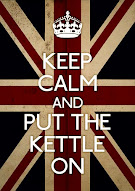 This is Kate Webster, female killer from my novel The Murderess and the Hangman. For more about the novel, please see my homepage here.
This is Kate Webster, female killer from my novel The Murderess and the Hangman. For more about the novel, please see my homepage here.The following article from The New York Times deals with the role of female killers and art, particularly in light of the recent shootings by Amy Bishop, a professor at the University of Alabama.
When Ezra Pound declared in 1934 that “artists are the antennae of the race,” and Marshall McLuhan 30 years later called them people “of integral awareness,” both were using modern terms to update the ancient belief that works of the imagination might actually require a talent not only for invention but for attunement — for picking up signals already in the air. This is why the most forceful narratives and dramas seem less made up than distilled. They clarify events and experiences taken directly from the actual world.
Thus, the Jazz Age is better known through the fiction of F. Scott Fitzgerald, who captured its energies in real time, than through any number of retrospective studies. And the alienated teenager, that fixture of modern American life, didn’t fully exist until J. D. Salinger, with his faultless ear and attentive eye, coaxed him into being.
It is not news that so-called senseless acts often unfold along the coordinates of an inner logic. This is what makes criminal violence so attractive a topic for artists and thinkers. The Western literary tradition, from Shakespeare to Dostoevsky, teems with pathologically violent men. Norman Mailer and Truman Capote wrote nonfiction masterpieces about them. They dominate the novels of Don DeLillo and Robert Stone, not to mention films by Sam Peckinpah, Francis Ford Coppola and Martin Scorsese.
But the landscape of unprovoked but premeditated female violence remains strangely unexplored. Women who kill are “relegated to an ‘exceptional case’ status that rests upon some exceptional, or untoward killing circumstance: the battered wife who kills her abusive husband; the postpartum psychotic mother who kills her newborn infant,” Candice Skrapec, a professor of criminology, noted in “The Female Serial Killer,” an essay included in the anthology “Moving Targets: Women, Murder and Representation” (1994).
Ms. Skrapec was writing at a time when Hollywood seemed preoccupied with women who commit crimes — in productions like “The Burning Bed,” the 1984 television film in which a battered wife finally sets her sleeping husband aflame, and “Thelma & Louise” (1991), in which a pair of women go on a outlaw spree after one of them is threatened with rape.
Both are essentially exculpatory parables of empowerment, anchored in feminist ideology. Their heroines originate as victims, pushed to criminal excesses by injustices done to them. The true aggressors are the men who mistreat and objectify them. So too with “Monster” (2003), in which Charlize Theron, in a virtuosic instance of empathy (and cosmetic makeover) re-enacted the story of Aileen Wuornos, a real-life prostitute who, after years of sexual abuse, began murdering her clients.
A decade or two ago this all made sense. The underworld of domestic abuse and sexual violence was coming freshly to light. And social arrangements were undergoing abrupt revision. The woman who achieved hard-won success in the workplace might well find herself, like the lonely stalker played by Glenn Close in “Fatal Attraction” (1987), tormented by the perfect-seeming family of the married man with whom she enjoys a weekend fling.
Much has changed since then, but the topic of women and violence — especially as represented by women — remains more or less in a time warp, bound by the themes of sexual and domestic trauma, just as male depictions of female violence are locked in the noir demimonde of fantasy, the slinky femmes fatales once played by Barbara Stanwyck and Lana Turner more or less duplicated by Kathleen Turner and Sharon Stone.
Put it another way. It is not hard to imagine Mr. DeLillo or Mr. Scorsese mapping the interior circuitry of Timothy McVeigh; Seung-Hui Cho, the Virginia Tech killer; or Bruce E. Ivins, the Army biodefense expert who, the F.B.I. concluded last week, committed anthrax terror in the aftermath of 9/11 — the paranoia, the lethal mix of fantasy and ruthless plotting. But what artist might do justice to Dr. Bishop and her complex story, as its details have so far been reported: the privileged upbringing; her stable marriage to a uxorious husband, who was also her collaborator on scientific inventions; their four children, some of whose homework Dr. Bishop is monitoring from her jail cell? And what of the accounts given by associates and neighbors of her personal qualities — assertive, bristling with sharp opinions, vocal on the subject of her brilliance, harboring fierce resentments?
The uncomfortable fact is that for all her singularity, Dr. Bishop also provides an index to the evolved status of women in 21st-century America. The number of female neurobiologists may still be small, but girls often outdo boys in the classroom, including in the sciences. (Mattel recently announced a new addition, Computer Engineer Barbie, to its line of popular dolls.) A Harvard Ph.D. remains a rare credential for women (as well as for men), but women now make up the majority of undergraduates at many prestigious colleges. And the tenure struggle said to have lighted Dr. Bishop’s short fuse reflects the anxieties of many other women who now outnumber men in the work force and have become, in thousands of cases, their family’s principal or only breadwinner.
These conditions have been developing for some years now. But the most advanced narratives of female violence seem uninterested in them. There is, for example, Marina Abramovic, a pioneer of performance art who will be honored in a major retrospective at the Museum of Modern Art in March, with 35 artists re-enacting five of her works. Ms. Abramovic, born in what was then Belgrade, Yugoslavia, first became a force in 1973 at the Edinburgh Festival, where she furiously stabbed a knife between her splayed fingers, bloodying 10 blades and tape recording the noises she made as she wounded herself. In 2002 Ms. Abramovic was still at it, exhibiting herself for 12 days in a downtown Manhattan installation, wordlessly moving among three raised platforms connected to the floor by ladders whose rungs were fashioned from large knives, their gleaming blades turned up.
There is also Karen Finley, whose avant-garde explorations of sexual violence put her in the middle of the federal arts-financing wars two decades ago. She is back onstage in “The Jackie Look.” Outfitted in bouffant and pearls, in imitation of Jacqueline Kennedy Onassis, Ms. Finley stands at a lectern and delivers a monologue on the female body — at one point shedding copious tears — and on the indignities ritually inflicted on public women (Michelle Obama no less than Mrs. Onassis).
All this is stimulating in its way, but it feels curiously outmoded. Although Ms. Abramovic and Ms. Finley are both charismatic presences, their antennae seem to have rusted. They persist in registering the dimmed signals of a bygone time.
For this reason, perhaps, the most useful glosses on Dr. Bishop may come from the world of popular, even pulpish, art — for instance, crowd-pleasing movies like “Black Widow,” “Blue Steel,” “The Silence of the Lambs,” Quentin Tarantino’s “Kill Bill” or even “Lost,” the ABC series. In all of them the hypothetical notion of empowerment gives way to the exercise of literal power. So too in crime novels written by women who specialize in the disordered or deranged mind. Genre art has its own limitations. But its strength is that it seeks to reanimate archetypes and is indifferent to ideological fashion.
“Everything is about power,” Patricia Cornwell, whose best-selling Scarpetta series is thick with forensic detail, maintained in an e-mail message, when asked what she made of the Bishop case. “The more women appropriate power, the more their behavior will mimic that of other powerful people.” Also: “Firearms are the great equalizer. You don’t have to be 6 foot 2 and weigh 200 pounds to kill a room full of people.”
Chelsea Cain, the author of a crime series that reverses the formula of “The Silence of the Lambs,” pitting a male detective against a female serial killer, suggested that Dr. Bishop is the latest version of an ancient figure, “the mother lioness that kills to protect herself and her family against perceived threats.”
In fact two middle-aged classics of genre literature eerily prefigure aspects of the Bishop case. In William March’s 1954 novel “The Bad Seed,” later adapted for both stage and film, an 8-year-old girl viciously murders a classmate but is protected by her mother, only to kill again. This parallels the allegations in Dr. Bishop’s case, at least according to the resurfaced police report on the death of her brother nearly a quarter-century ago.
No genre writer had sharper antennae than Shirley Jackson, whose gothic classic, “We Have Always Lived in the Castle,” first published in 1962, was reissued last fall. Its narrator is an 18-year-old multiple murderess who lives with her devoted sister and fantasizes about killing again. She is “socially maladroit, highly self-conscious, and disdainful of others,” Joyce Carol Oates wrote in a penetrating essay recently in The New York Review of Books. “She is ‘special.’ ” Words that ring ominously in the context of Dr. Bishop.
Ms. Oates, of course, has examined violence as thoroughly as any living American writer. When I asked her what she made of the case, she drew an implicit comparison between Dr. Bishop and Shirley Jackson’s narrator: “She is a sociopath and has been enabled through her life by individuals around her who shielded her from punishment.”
Ms. Oates’s feminist credentials are in good order. But her assessment comes from beyond the realm of predigested doctrine. It echoes the blunt assertion made by Ms. Cornwell: “People kill because they can. Women can be just as violent as men.”
--
Sam Tanenhaus, The New York Times, February 24, 2010





croppedsidebar.jpg)

.png)


















No comments:
Post a Comment